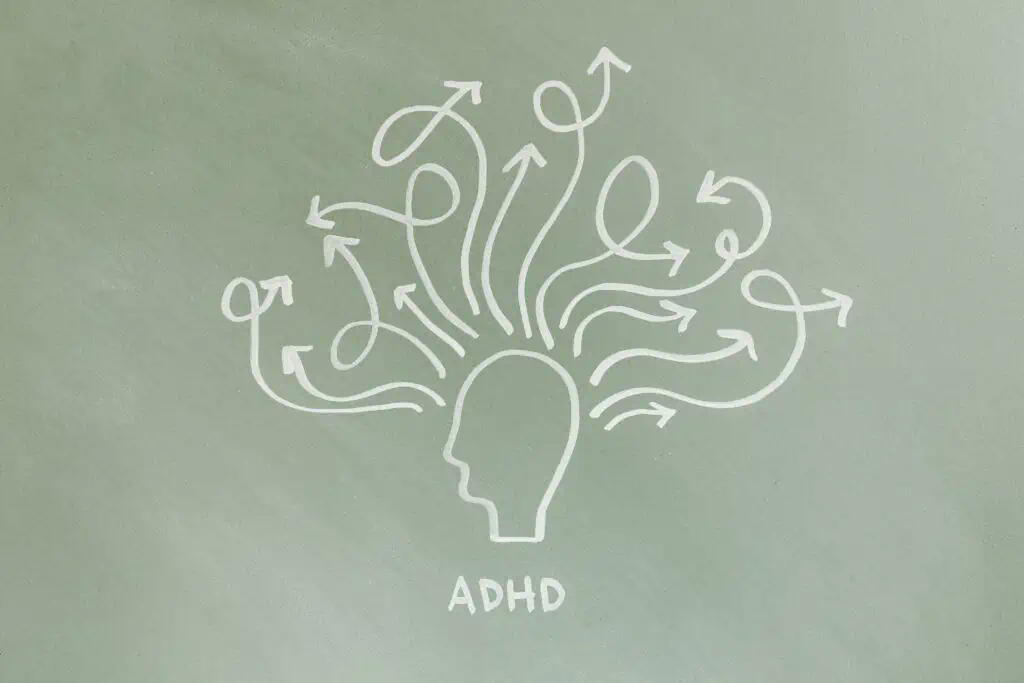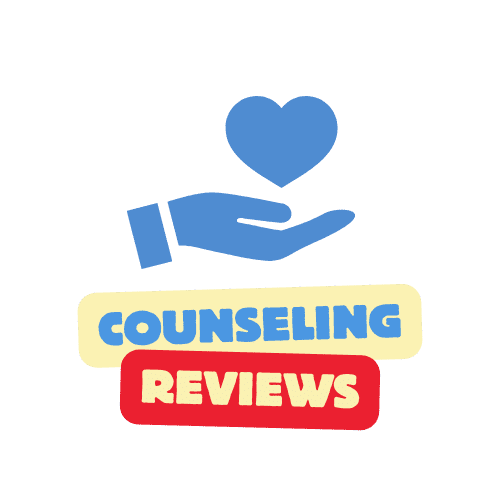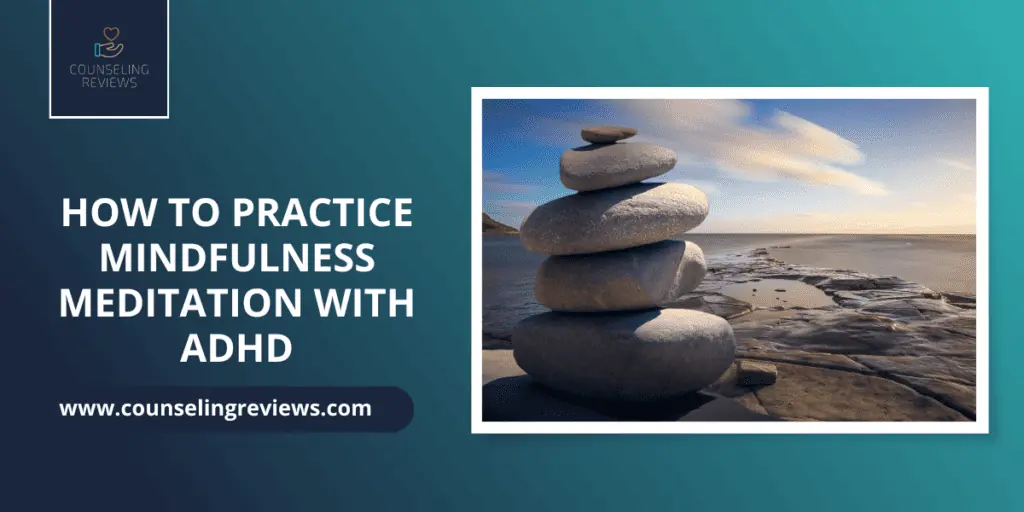Attention-Deficit Hyperactivity Disorder (ADHD) is a neurodevelopmental disorder often diagnosed during childhood. It tends to persist into adulthood and may cause a variety of occupational, interpersonal, and psychological deficits. ADHD is also increasingly diagnosed among adults, in which case, it is known as adult ADHD.
The most common symptoms of ADHD include not being able to focus, being hyperactive, talking too much or fidgeting in social situations, and being impulsive or careless. ADHD may consist of other symptoms that overlap with other psychological conditions. Hence, it is important to desist from diagnosing oneself and meet with mental health professionals for an ADHD diagnosis.
If you or your child has been diagnosed with ADHD, you will be prescribed medication and advised to seek therapy. In addition, you may also benefit from relaxation techniques such as mindfulness meditation.
In this article, let us look at how mindfulness meditation can help people with ADHD improve their concentration and focus and diminish unpleasant symptoms associated with this disorder. In addition, we will also list certain strategies that can be helpful to people with ADHD to practice mindfulness meditation without getting distracted.
What is ADHD?
Attention-Deficit Hyperactivity Disorder (ADHD) affects many children and adults. It is a chronic condition marked by difficulties in sustaining attention and impulse control and a heightened tendency to be hyperactive. Children and adults with ADHD often suffer from low self-esteem, poor interpersonal skills, and occupational difficulties. Although there is no cure for ADHD, there are medicines and therapies that alleviate the symptoms.

The three types of ADHD are:
- Predominantly inattentive – Most problems are related to difficulties sustaining attention. This may manifest as failure to pay attention to lectures, losing track of what is being said during meetings, etc.
- Predominantly hyperactive/impulsive – This type presents itself as a collection of behaviors that may be perceived as reckless or impulsive. It is important to differentiate this subtype of ADHD from other impulse control disorders.
- Combined – Some people find it difficult to pay attention while being hyperactive and impulsive. As this type of ADHD combines the first and second types, it is called combined ADHD.
How Can Meditation Help with ADHD? What happens in the mind and body?
If you or your child has been diagnosed with ADHD, it is important to follow your treatment provider’s advice and take the medicine as advised. It is also important to attend therapy sessions regularly to manage different symptoms associated with ADHD.
In addition to medication and therapy, you can also try meditation. Meditation helps people to gain clarity and calm a hyperactive mind. Mindfulness meditation teaches people to recognize their inner cognitive processes without judging them harshly. It allows people to observe from a distance without reacting.
Some studies have noted higher plasmatic serotonin and melatonin levels during a meditative state. While adequate serotonin levels are necessary to maintain an agreeable mood, melatonin helps people sleep well. According to WebMD, meditation may also thicken your prefrontal cortex, which enables you to control your impulses and pay more attention. Hence, meditation may work in multiple ways to address symptoms associated with ADHD.
Research on meditation benefits for ADHD
Many studies have linked mindfulness meditation with improved health outcomes among those diagnosed with ADHD. A study conducted by UCLA found that people with ADHD who practiced meditation once a week for two and a half hours in addition to a home meditation exercise were noticeably better at focussing on tasks. Their levels of anxiety and depression reduced too.
Another study found that mindfulness training improved both self-regulation and attention span, which can lead to a reduction in ADHD-related symptoms. In a study conducted on 25 children aged between seven and 11, mindfulness-oriented meditation had a positive impact on neuropsychological measures. The researchers noted that mindfulness meditation is a promising tool for improving clinical manifestations of ADHD.
In the past, meditation has been studied in the context of reducing stress and anxiety. People with ADHD often suffer from secondary anxiety and stress due to various coping deficits and interpersonal problems. Meditation may help reduce both stress and anxiety among those with ADHD and help them to channelize their cognitive resources toward more pertinent tasks.
Mindfulness Meditation for ADHD
ADHD is characterized by an inability to focus and concentrate. Hence, many assume it is difficult for people with ADHD to meditate. Of course, if you have problems concentrating or paying attention, meditation may seem counterintuitive. However, with persistence and a little training, meditation can help reduce many symptoms associated with ADHD. Specifically, mindfulness meditation allows you to be less judgmental about your thoughts and feelings and develop a more positive relationship with yourself.

ADHD Meditation Strategies
If you are worried about how you will be able to get yourself to meditate on a regular basis when distraction is your real problem, here are some strategies:
Set aside a particular time for meditation.
To begin with, it is important to set aside a particular time for meditation. The exact time depends on your convenience, and you should figure out the most appropriate time for you. Some people prefer to meditate just before going to bed, while others prefer to do it after waking up in the morning. Others may prefer meditating during the day when they are less likely to get distracted by sleep.
You can meditate even while moving.
People with ADHD find it difficult to sit in a fixed position for a long duration. Meditation is often associated with sitting in a lotus position. Thankfully, you can meditate even when fidgeting or making rocking movements. The trick is to observe these behaviors non-judgmentally and tell yourself that since you have ADHD, you cannot sit in a particular position for a long time. If you find yourself moving or fidgeting during meditation, observe your thoughts and record them in a diary later. This may be useful during therapy sessions.
Keep your phone away.
One of the most distracting elements in our life is the ubiquitous cell phone. Cell phones cause many more problems to people with ADHD than those without a need for hyperactivity. Keep your phone in a drawer far from where you plan to meditate. This will ensure you don’t get distracted and start doom-scrolling instead of meditating.
Find an agreeable place to meditate.
Even if you don’t have ADHD, finding a quiet place to meditate can be difficult. With ADHD, things can get more complex. You may get distracted by the slightest of sounds and may even feel annoyed that you cannot meditate. At times like these, observe your thoughts, and try not to judge your irritation. Instead, record how you felt by naming the emotion and assigning a score for the intensity of that emotion. Please remember the most suitable place to meditate is where you find yourself ready.
Focus on physical sensations.
People with ADHD are often overwrought with thoughts and emotions. Hence, quieting your mind and meditating traditionally may be almost impossible. Instead, you can focus on physical sensations by systematically scanning your body. Observe how your stomach rises and falls during breathing, and notice your heartbeat. Make a mental note of all the sensations your ears, skin, and nose perceive. Of course, you can also notice what you imagine while your eyes are shut.
Do not control your thoughts and feelings.
It is only natural for your thoughts to wander and to feel different emotions while you meditate. This is perfectly normal and should not discourage you from continuing to meditate. If your thoughts and feelings overwhelm you, focus on physical sensations, and tell yourself it is OK for your mind to think thoughts and feel emotions because that is precisely what it is supposed to do. End your meditation sessions slowly, without criticizing yourself for being distracted or hyperactive.
Use relaxation or biofeedback devices.
If regular meditation is not your cup of coffee, there are relaxation devices that can help you. Relaxation devices often come as mobile applications or as biofeedback tools. There are many benefits of biofeedback. A biofeedback device that mimics the traditional biofeedback technique helps you monitor your breathing and stress levels via heart rate, body temperature, perspiration, and other attributes. You can use a relaxation device to assist you during meditation if you cannot concentrate or focus.
Please note, whether meditation helps you or not, it is important to continue taking your medicines and attend therapy sessions according to your mental health team’s advice. Meditation alone cannot treat or manage all the symptoms of ADHD.
FAQs
What is the most ADHD-friendly form of meditation?
Mindfulness meditation is the most ADHD-friendly form of meditation as it teaches you to be non-judgemental about how you think and feel during the session. Moreover, this form of meditation is inherently flexible and does not subscribe to strict protocols regarding how you sit, when you meditate, or where you meditate. Even if you move or fidget during mindfulness meditation, it is perfectly OK.
Do people with ADHD have a more difficult time with meditation?
Yes, people with ADHD may find it difficult to meditate. Meditation requires effort and discipline, even while practicing more flexible methods such as mindfulness meditation. Nevertheless, with time, people with ADHD can find a method most appropriate for their needs and situations. Mindfulness meditation is flexible, allowing you to meditate how you want to, even when you are distracted. Most importantly, it teaches you to observe your thoughts and feelings without judging yourself.





